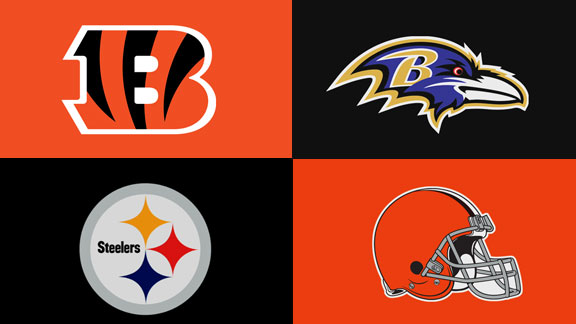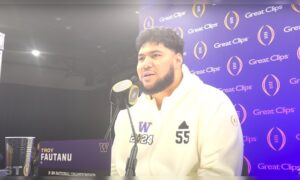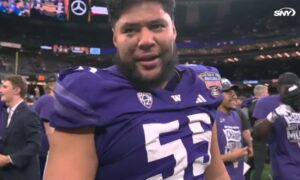On the heels of the conclusion of the 2015 NFL Draft, I began to realize the need to enhance my understanding of each team’s draft history; what they’ve built or attempted to build over the past ten years and how they’ve went about that process.
This may seem tedious to you, the reader, but I think as analysts and fans of a great game, it can be hard to criticize or praise a team without understanding the full context of how their roster and positional depth has been constructed.
For example, the New York Jets and theBuffalo Bills are often ridiculed heavily for their drafting incompetence at the quarterback position, but while often grouped together, a review of their past 16 classes suggest two vastly different front office mindsets. The Jets have spent an incredible 12 picks on quarterbacks (by far the most in the AFC), while the Bills have used just four selections on signal callers over the same time period. So two teams that have had similar results at the quarterback position since 2000, but have attempted to address those issues in vastly different ways.
Similar comparisons can be made in the AFC North, a process which we will begin to endeavor upon today with the examination of each team’s overall draft selections over the past ten years. First, we will look at the total number of defensive and offensive selections from 2006-2015 for each team, before moving into each positional group over the next several days.
Defense
Cleveland Browns: 43
Pittsburgh Steelers: 41
Cincinnati Bengals: 40
Baltimore Ravens: 36
Many would not expect a defensive team like Baltimore to have just 36 picks on that side of the ball over the past ten draft classes, but there are multiple ways to look at these numbers. One is to see a team that consistently ignores deficiencies to load up on other positions (see Buffalo in the example above), another is to see a team that hits on selections consistently enough to not have to spend multiple resources addressing the same position. Given Baltimore’s defensive prowess over the past decade, the latter is undoubtedly what we have here.
Just a quick observation of some of their first round picks (C.J. Mosley, Jimmy Smith, Haloti Ngata) shows a team that rarely misses their mark when selecting defensive talent at the top of the draft. It is somewhat interesting to note that the Ravens have only spent four first round picks on defensive players over the past ten drafts, the lowest number in the AFC North.
The Steelers and Bengals have invested heavily on the defensive side of the ball, with Pittsburgh spending six first round selections on front seven defenders since 2006, including linebackers in each of the past three drafts. The Bengals have been much more defensive back-oriented, with four of their five first round defensive picks coming at cornerback over the past ten classes. The Browns have had the most balanced approach at the top, with two first round picks used on the defensive line, two at linebacker, and two at defensive back.
Offense
Cincinnati Bengals: 49
Baltimore Ravens: 47
Pittsburgh Steelers: 43
Cleveland Browns: 37
No team in the North has invested as heavily on the offensive side of the ball as Cincinnati, and as we examine each position more intricately in the coming days, you’ll soon see that building their offensive line has been a major priority over the past ten years. The moves have paid dividends, as the Bengals have boasted one of the NFL’s top lines for several years now. While the team could certainly stand to add some speed on the offensive side of the ball, it is difficult to argue with what Cincinnati has built, save for perhaps Andy Dalton, arguably the most polarizing piece in their lineup.
The Ravens have clearly been searching for offensive talent to build around Joe Flacco for some time now, but finding talent at the receiver position has been extremely elusive for them, as you’ll see in my wide receiver breakdown in a few days. The team has had to spend more picks than they probably wanted to on the offensive side of the ball, but building a strong line in front of Flacco has allowed them to spray-and-pray a bit at the skill positions in the middle rounds. The selection of Breshad Perriman a month ago marked the first time Baltimore had spent a first round pick on an offensive player since Michael Oher in 2009.
The Steelers have shown great balance when you look at their offensive and defensive selections, but have been much more successful drafting on the offensive side of the ball over the past ten years. Recent selections like Le’Veon Bell, Antonio Brown, Martavis Bryant,David DeCastro, Maurkice Pouncey, and even Kelvin Beachum have helped build an exciting nucleus around Ben Roethlisberger since 2006. If Todd Haley can keep this group on target, they will truly be one of the best internally-built NFL offenses of the past decade.
Cleveland has had massive issues on the offensive side of the ball, mostly stemming from the quarterback position, but clearly the team has more heavily prioritized building up the defense over the past ten years. Not a bad move, but Cleveland’s issues are widespread on offense, featuring perhaps the worst passing attack amongst any team in the NFL, at least on paper. Cleveland’s offensive line has been the great equalizer however, keeping a talent-derived group above water with their stellar play over the past several years. Mike Pettine seems determined to built from the inside-out, a wise move, but eventually the skill positions are going to need some serious upgrades in Cleveland.








